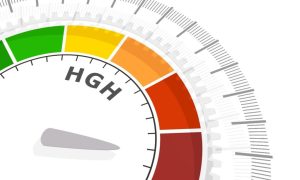Though the practice of fasting has been around for centuries primarily for religious and ceremonial purposes, it’s only become a popular health and wellness practice in recent years.

Simple in its explanation but difficult in its execution, fasting is the act of restraint from consumption for a given period of time. In the most extreme of circumstances, fasting can last days, with no food and only limited drink allowed to be consumed. Among the most popular fasting protocols is intermittent fasting.
In what follows, we’ll be discussing what intermittent fasting is, how it works, what types there are, and how the body responds to this process. Further, we’ll share strategies for managing hunger while in a fasting state. Finally, we’ll discuss its many benefits, including weight loss.
Intermittent Fasting
Intermittent fasting is a popularized fasting protocol whereby there’s a window of allowable time for consumption and a window of restriction where no consumption is to take place.
The idea of using fasting in this protocol is based on the fact that by prohibiting the consumption of food for several hours, the body eventually exhausts itself of glucose, using it all for energy during the fasting session.

As a result, the body then begins to burn fat for fuel and, in the process, switches the body’s natural metabolic process to a weight-loss-promoting process.
Though it’s yet to be determined which method of fasting is most effective, the majority of the research has been done on the 16:8 method of intermittent fasting.
The following are the most common types of intermittent fasting.
The 16:8 Method
Offering a window of 8 hours for consumption and 16 hours for restraint, the 16:8 method is likely the most practiced of fasting protocols, not only for its low barrier to entry but for its proven benefits. The typical schedule for this protocol is beginning the eating window at noon and ending it at 8 p.m., and then running the restriction window from 8 p.m. to noon the following day.
The 5:2 Method
While the 16:8 method is a way of breaking down a 24-hour period, the 5:2 method is a way of breaking down a one-week period. In the protocol, five days are to be carried out with usual consumption, and two days are to involve a 500-calorie consumption limit.
Prolonged Fast
Whether for 24, 48, or 72 hours, or anything in between, a prolonged fast is an intermittent fast that lasts up to several days without consumption of food and/or water.
The Benefits of Intermittent Fasting
Although the research on intermittent fasting has yet to show that its benefits are superior to that of other dietary protocols, it’s an undeniably valuable tool, particularly for those seeking to lose weight, reduce body fat, or simply live a more conscious and intentional lifestyle.
Similarly, while it might sound counterintuitive to ignore the lack of research on the subject, the anecdotal evidence is quite convincing in considering the validity of the method.
It is a superior strategy for those who’d prefer to avoid the tedious practice of calorie counting during weight loss, and it’s also an excellent natural appetite suppressant. In addition, it’s a very efficient strategy for energy production. While it might take 1-2 weeks for the body to adjust, the results can be profound once adjusted.
Intermittent fasting also has several other health and wellness benefits, and these vary from person to person and depend on the consistency of the fast. The following are some benefits seen.
- Mental Sharpness and Acuity
- Focus and Cognition
- Reduction in Inflammation
- Cellular Generation and Cleansing
- Boosted Hormonal Health
- Improved Blood Pressure and Blood Sugar Levels
In order to benefit from intermittent fasting, however, the fasting period must be adhered to strictly and successfully. This requires managing hunger during the fast. Strategically, it’s imperative to stay hydrated via water and electrolytes, reduce stress, and find healthy distractions. Other hunger management tactics include coffee consumption, meditation, and being strategic with food choices during windows of consumption.
Though weight loss is likely the most common and obvious benefit, the concept of improved cellular and hormonal health is quite interesting.
How Intermittent Fasting Affects Cells and Hormones
Physiologically, intermittent fasting plays a major role at the cellular level that likely has an impact on hormonal health and beyond.
Not only does human growth hormone increase during a prolonged fasting period, but insulin levels go down, and cellular regeneration and repair are triggered.
The following are some of the biological and physiological changes that occur.

The levels of growth hormone skyrocket, increasing by as much as five-fold. This has benefits for both fat loss and muscle gain.
Insulin Sensitivity
The sensitivity of circulating insulin improves, and levels of insulin drop dramatically. Lower insulin levels make stored body fat more accessible to burn.
Cellular repair
When fasted, the cellular repair process is triggered. This includes autophagy, a process whereby old cells are removed and new cells are generated.
Final Thoughts
Intermittent fasting is a popular method of weight loss, and it can produce excellent results. However, it’s recommended for most individuals to use the more popular 16:8 intermittent fasting protocol.
Not only is this the easiest method to adopt as a beginner due to its simplicity and attainability, but it might just be the most effective strategy out there. Yet, more research will be necessary to draw more specific conclusions about this protocol.
